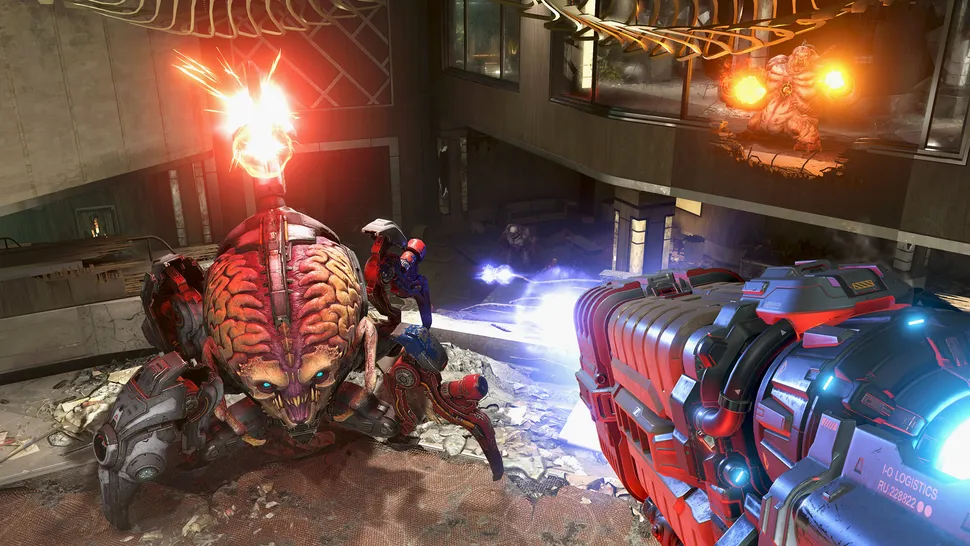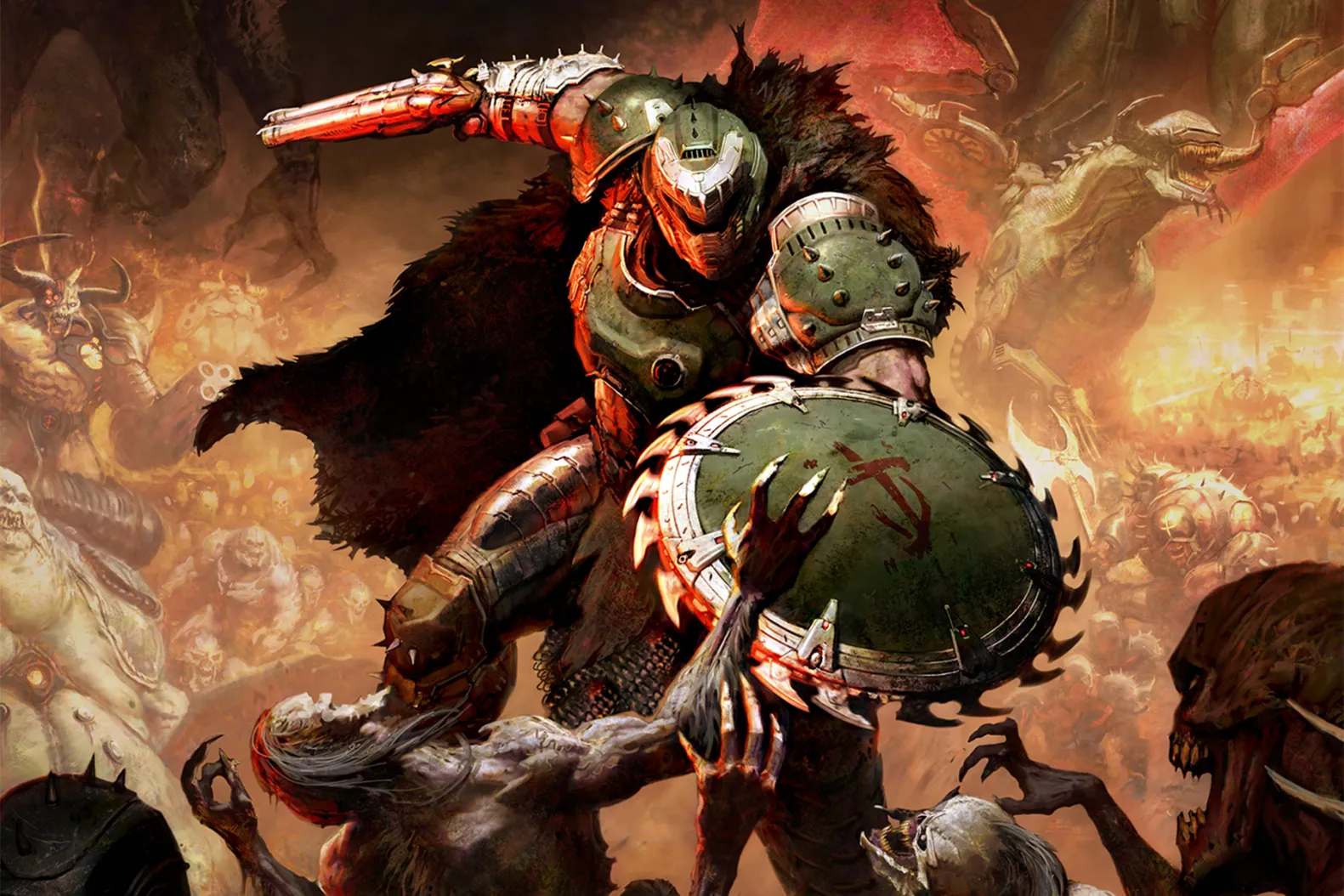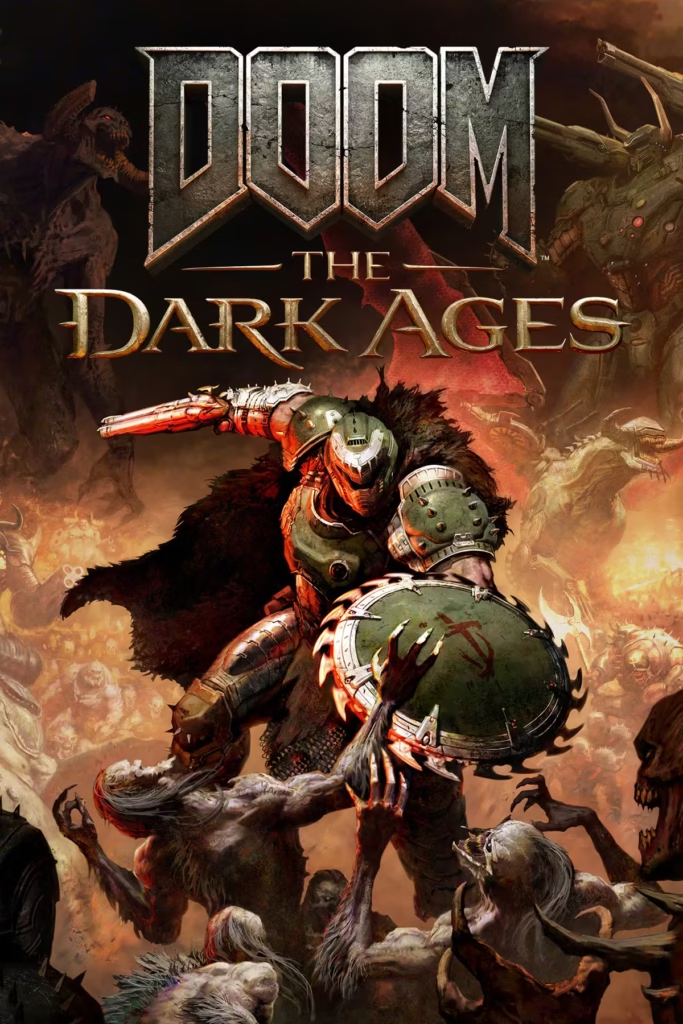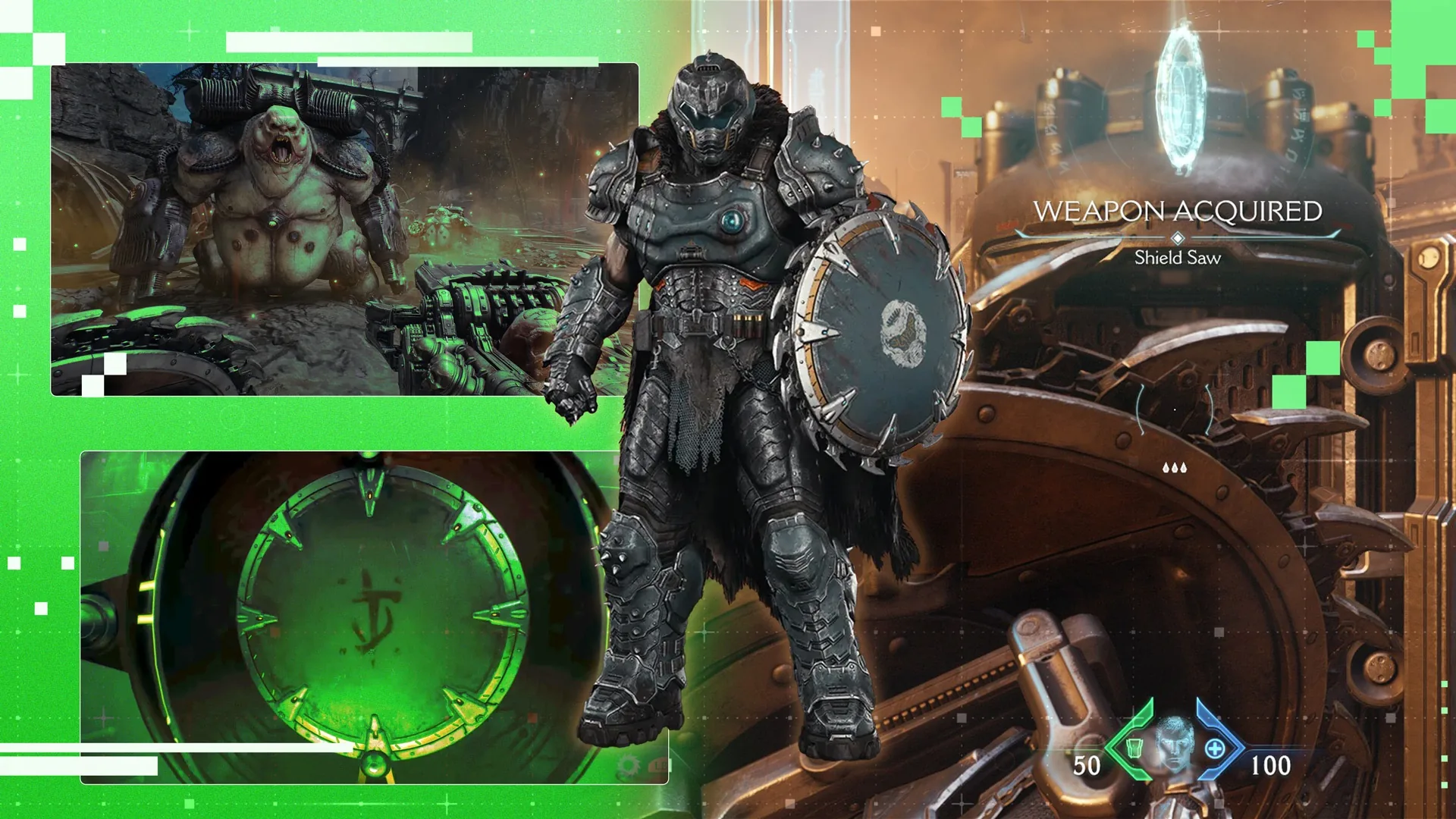The latest installment in the Doom franchise, “Doom: The Dark Ages,” offers a fresh yet familiar experience for fans of the iconic series. Developed by id Software, the game shifts its focus from the quick, fluid combat of recent entries to a more methodical and heavy-handed approach. This change in gameplay style introduces new elements while retaining the series’ hallmark intensity and chaotic battles.
Critics and players alike have noted the blend of classic gunplay with a grounded, medieval-inspired aesthetic. While the game experiments with new mechanics, some feel it leans on past formulas. Despite this, the atmospheric design and gripping enemy encounters keep it engaging for both long-time fans and newcomers.
Key Takeaways
- The game adopts a slower, more deliberate style than recent entries.
- It blends classic Doom elements with medieval-inspired designs.
- Reception highlights both innovation and overused concepts.
Doom: The Dark Ages Combines Brutal Combat with a Slower Narrative Approach
Doom: The Dark Ages offers a unique take on the iconic gameplay formula, blending visceral action with a more contemplative narrative style. The game serves as a prequel, delving into the origins of the Doom Slayer, a legendary warrior recognized for his unmatched brutality. Unlike earlier entries that thrust players straight into the chaos, this installment begins with a subdued introduction, featuring muted visuals and a textual exposition about the protagonist’s backstory. This deliberate shift in tone hints at broader ambitions beyond simple demon-slaying.
While combat remains central, with guns like the double-barrel shotgun and signature glory kills returning, some fans might notice the gameplay feels less refined compared to its predecessors. Powered by id Tech 8, the game attempts to innovate through its fantasy-inspired theme and environmental storytelling. However, the exploration-heavy design slows the pacing, occasionally creating uneven moments between thrilling battles and the quieter sequences.
The Doom Slayer’s arsenal retains its brutal charm, offering satisfying ways to dispatch enemies, yet some encounters suffer from restricted movement and repetitive patterns. Coupled with text-heavy lore segments, the game leans into its narrative aspirations more than previous installments. Players expecting relentless action may find this approach refreshing in some areas, but tedious in others.
By revisiting the Doom Slayer’s origins, Doom: The Dark Ages balances its story-driven ambitions against the series’ hallmark intense combat.
Doom and Destruction

Doom: The Dark Ages merges fantasy and science-fiction into an atmospheric battleground. Instead of the post-apocalyptic ruins players might expect, the game introduces a sprawling castle under attack. The skies glow red, etched with demonic symbols, setting the tone for brutal clashes. Dragons scorch the earth, while heavy artillery rains destruction from above, painting a picture of chaos.
The new setting brings fresh elements to the series. Players face relentless demons in a landscape resembling medieval times but with a science-fantasy twist. Weapons like energy-fueled crossbows and plasma-like swords replace traditional sci-fi guns, creating a blend of old and new. These tools of destruction maintain the ultra-violent gameplay the franchise is known for.
The graphics enhance the experience with vivid skies, detailed landscapes, and fluid animations. Combat feels weighty, challenging players to survive relentless waves of enemies. For those ready to brave it on higher difficulties like “Nightmare,” the satisfaction lies in the devastation they leave behind.
Editor’s Picks
Key Features of Doom: The Dark Ages
- Combat Focus: The emphasis shifts to slow, strategic melee combat, replacing the fast-paced mobility features seen in earlier entries. Moves like double jumps and dashes are now absent, forcing players into a more methodical approach.
- Fantasy Overhaul: The game sheds its sci-fi elements and embraces a high fantasy aesthetic. Demonic imagery is taken to a new level, with environments and creatures resembling something closer to Diablo than the familiar universe of previous installments.
Story Highlights
- The Slayer’s Role: Known for his relentless brutality, the Slayer now operates as a mysterious, silent figure allied with humans and Makyrs—a terrifying twist on angelic figures. His mission is clear: eradicate the forces of Hell.
- Campiness Diminishes: While the narrative retains its absurd and over-the-top charm, the shift to fantasy tones dulls some of the humor fans enjoyed in recent games. The Slayer’s rage-fueled antics are still present but overshadowed by the game’s darker approach.

Gameplay Tweaks
- The lighter comedic edge seen in games like Doom (2016)—where moments like angrily yanking keycards from corpses brought levity—has been toned down in favor of heavier, atmospheric storytelling.
- Visuals and Cutscenes: The cinematic style leans heavily on dramatic cutscenes, showcasing the Slayer’s battles with an intense focus on raw power. These visuals underline the game’s bold pivot away from its sci-fi roots.
Game Atmosphere
A darker, moodier vibe permeates the game’s environments, adding to its immersive quality. The fantasy-inspired design choices reveal a willingness to take risks, even if it means sacrificing some of the playful elements that defined earlier entries.
Stylistically, this shift gives Doom: The Dark Ages a unique identity within its franchise, positioning it as one of the more ambitious installments to date.
Related Content
The Doom series has seen significant changes over its entries, with Doom Eternal embracing a more over-the-top portrayal of the Slayer as a larger-than-life figure. This iteration featured a Justice League-inspired satellite, the Fortress of Doom, and leaned heavily into superhero aesthetics. While this approach added flair, it divided fans who preferred the stripped-down style of earlier Doom games.
Doom: The Dark Ages takes a different direction, serving as a prequel to Doom Eternal. It tones down the exaggerated heroism and focuses on a more grounded narrative. However, it introduces an increased reliance on cutscenes, moving away from the series’ traditional use of environmental storytelling through the Slayer’s perspective. This shift has sparked debate among players, as these cinematic elements sometimes overshadow the core action-driven gameplay.
Fans who enjoy exploring the lore of the Doom universe may appreciate the added context provided in The Dark Ages. However, the writing and complexity of the story remain straightforward, lacking the depth to fully captivate some audiences. Regardless, the prequel attempts to weave together new combat styles and storytelling, bridging the evolution of the Slayer’s character with the broader Doom timeline. Details like these continue to shape the modern trilogy’s identity within the gaming landscape.
Fresh Mechanics, Familiar Patterns
The Dark Ages introduces gameplay changes that strive to shake up the established formula, but for better or worse, it feels like a nod to earlier titles in the series. Instead of the usual relentless pace defined by bold offensive combat, this installment slows things down and emphasizes thoughtful decision-making during encounters. Players will notice shifts in mechanics that encourage a more cautious approach compared to its predecessors.
Core Combat Adjustments

The most prominent alteration comes with the incorporation of a shield. Not merely a simple defensive tool, the shield doubles as a buzzsaw, adding a layer of utility to its design. It plays a central role in the gameplay loop. Enemies now fire telegraphed attacks, which can either be blocked outright or avoided through deliberate movement. This setup echoes the responsive dodging mechanics of traditional FPS games from earlier generations.
Accompanying the shield is a parry system, mapped to green-highlighted attacks. Successfully timing a parry sends shockwaves that damage opponents, transitioning defensive maneuvers into opportunities for quick retaliation. Both features combine to craft a slower, methodical combat loop that heavily emphasizes timing and spatial control, shifting away from the chaotic style that defined modern Doom entries. Precision becomes the foundation of survival.
Health and Ammo Dynamics
Past iterations relied heavily on Glory Kills to replenish health during fast-paced battles, demanding players aggressively push forward and absorb incoming damage for rewards. The dynamic has evolved here. Rather than pressing the offensive for restoration, players need to rely on careful defensive strategies. Instead of rushing headfirst into danger, there’s an expectation to pause, assess, and act deliberately.
Ammo management also goes hand-in-hand with the slower combat design. While the chaotic frenzy of previous games encouraged scrounging for resources mid-fight, here, there’s less urgency. Carefully executed blocks and parries generate moments to refocus, reload, and plan the next move.
Balancing Action and Pacing
Experienced players accustomed to rapid and fluid combat from earlier Doom games might find the adjustment surprising or even polarizing. The rhythm takes time to master; being able to anticipate attacks is a skill honed through trial. This slower pacing can feel at odds with the traditionally high-speed momentum associated with the series. The moments between attacks become a mental exercise in positioning, making every encounter deliberate rather than overwhelming.
Fans of the classic FPS formula might appreciate how threats feel more predictable here, reducing the chaotic unpredictability. However, mastering the parrying system and timed shields might require patience some players hadn’t expected from the franchise’s typically frantic pace.
This blend of old and new mechanics ultimately shapes The Dark Ages into a title that adds measured beats to its combat, diverging from the trademark frenzy while retaining familiar touches.

A Clash of Control
The combat mechanics in The Dark Ages introduce layered systems that demand precision and quick thinking. At the heart of these changes is the shield, a defensive tool that doubles as an offensive asset. The shield allows players to absorb attacks and retaliate with powerful parries. However, it’s not an unlimited resource. After enduring a set amount of damage, the shield shatters temporarily, leaving the player exposed. This failure window forces players to strategically time their defenses, as mistimed parries or overreliance on the shield can lead to devastating openings for enemies.
Adding to the chaos is the introduction of the shield saw, a modification that integrates a rotating blade into the shield’s surface. Players can use it to slice through smaller foes while blocking, creating a satisfying balance of protection and aggression. But this tool also emphasizes proximity battles, which are risky due to the Slayer’s reduced movement speed compared to earlier games. While the shield saw can handle minor threats effectively, it struggles against the overwhelming barrage of attacks in larger skirmishes.
Weapons and Tactical Shifts
Weapons like the super shotgun remain core to the Slayer’s arsenal, but they come with adjusted mechanics. The absence of the extended reach from prior titles means that executing enemies with Glory Kills often requires inching dangerously close. This shift, paired with the Slayer’s slower pace, forces players to adopt a more deliberate approach, making every decision carry weight. The flail, a medieval weapon introduced in this installment, is an exciting addition for crowd control. Its sweeping motion allows players to clear groups of lesser demons, but its cooldown makes it less reliable during relentless enemy waves.
The atlan, a powerful melee upgrade, brings devastating damage at the cost of limited uses. While it provides enormous satisfaction when landing critical blows, frequent misses or unintentional downtime due to its recharge requirements can disrupt the combat flow. These limitations make it essential to alternate between other tools for survival. Similar care must be taken while switching weapons during shield usage, as the inability to access the radial menu while turtling can leave players fumbling without the proper gun for the next assault.
Battles and Strategy
Combat in this medieval setting introduces new layers of complexity through encounters with massive entities like the titan. These bosses amplify the game’s scale, turning battles into tense, high-stakes events. Titans demand a constant shift between offense and quick reaction, as the Slayer must balance between dodging their enormous attacks and exploiting brief windows for counterattacks. Yet, their sheer size often makes sightlines difficult due to the series’ reliance on first-person perspective, a stark contrast to the clarity found in third-person combat games.
Enemies such as the dragon, while visually striking, also highlight the design’s challenge with pacing. They loom above arenas, delivering sporadic airborne barrages that require heightened awareness. The Slayer’s slower mobility amplifies the difficulty here, as players must rely heavily on well-timed dodges and parries to handle these threats. Facing off against such foes becomes a lesson in patience, where reckless moves are quickly punished.
Technical Friction
Though thrilling in concept, many mechanics suffer from small but impactful flaws. Parrying, while satisfying when executed correctly, can occasionally fail to register inputs, leading to untimely defeats. Additionally, collectible resources like ammunition sometimes bug out, forcing players into awkward pauses as they scramble for supplies that seem just out of reach. These friction points create stumbles during gameplay, moments where the experience feels less refined than expected.
While some praise the game’s quirks as reminders of retro styles, this design philosophy is divisive. Certain fans may interpret these frustrations as intentional challenges, elements of “old-school charm” that add depth. However, others see it as avoidable roughness, unnecessary hurdles that detract from the otherwise engaging battles. Still, for those willing to master its pacing and quirks, The Dark Ages offers opportunities for strategic victories that leave players deeply satisfied amidst its chaotic arenas.
Popular Highlights
Latest Updates
A new wave of gaming nostalgia is sweeping through as Doom: The Dark Ages delivers a fresh take on classic action. The game bridges the gap between retro charm and the dynamic intensity of modern gameplay. Available across multiple platforms—PlayStation 5, Xbox Series X|S, and PC—it also comes with added accessibility through Xbox Game Pass.
Bold gameplay changes, such as more strategic combat and slower pacing, have sparked mixed reactions. While the Doom Slayer’s energy feels toned down compared to previous titles, the game still manages to entertain. Fans who prefer a blend of vintage and updated mechanics will find value here.
Here’s a breakdown for interested players:
- Platforms: PlayStation 5, Xbox Series X|S, PC
- Availability: Included in Xbox Game Pass
- Style: Strategic yet fun
Frequently Asked Questions

What are the main features and gameplay elements in Doom: The Dark Ages?
Doom: The Dark Ages introduces slower-paced combat compared to its predecessors, with a focus on strategic movement. The game features medieval-themed weapons like crossbows and swords, replacing the iconic firearms of past titles. Players can expect fresh mechanics that shift the tone while retaining intense action sequences. Exploration has been expanded, with secret areas and collectibles offering additional challenges.
How does Doom: The Dark Ages differ from earlier entries in the franchise?
This installment takes a significant departure from the fast, fluid style of games like Doom Eternal. Set as a prequel, it embraces a darker, gothic aesthetic with slower gameplay to match the tone of the medieval era. While earlier titles relied heavily on rapid shooting and advanced mobility, this game emphasizes precision and strategic combat.
What has been the feedback from critics on Doom: The Dark Ages?
Early reviews have praised how the game differentiates itself from the rest of the series while maintaining a satisfying experience. Outlets like IGN have commended it for its fresh approach, while The Verge highlighted its refined mechanics and engaging story. However, some have noted that it lacks the high-speed excitement that Doom fans are accustomed to.
Can Doom: The Dark Ages be played as part of Game Pass, and what are the perks of subscribing?
Players with an active subscription to Game Pass can enjoy the game at no additional cost. The service also includes exclusive perks, such as early access opportunities for certain games and discounts on purchasing DLC. This makes it a convenient option for fans looking to try out Doom: The Dark Ages without committing to a standalone purchase.
What should players know about the early access version of Doom: The Dark Ages?
Those participating in the early access phase experienced a preview of the campaign, which included limited levels and features. This early phase helped developers address bugs and refine gameplay based on community feedback before the wider release. Players also had the opportunity to unlock exclusive rewards not available in the final version.
How have players on Reddit and other discussion boards influenced opinions on Doom: The Dark Ages?
Community discussions on platforms like Reddit have shaped how the game is perceived. Many users shared mixed opinions, with some appreciating its slower approach and others missing the fast-paced combat of previous titles. These conversations often highlight both the strengths and weaknesses of the game, helping potential players decide whether it aligns with their preferences.





































